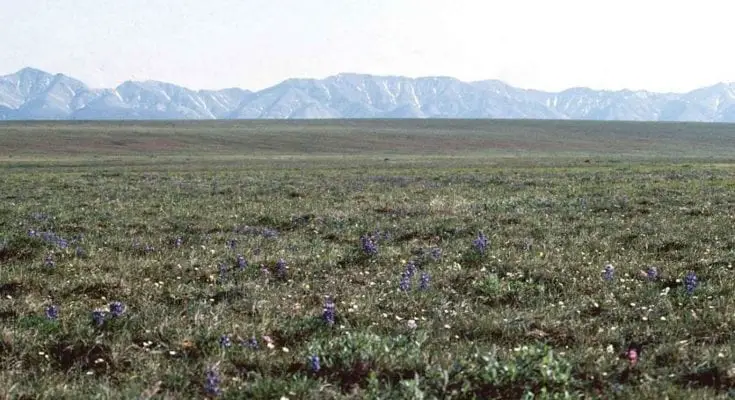Interesting Facts About The Tundra
The description “tundra” is a misnomer since it would not necessarily refer to the state of an area that is frozen; there is no such thing as a “tundra.” Tundra can mean a low-lying land area that is highly shaded by trees, shrubs and other plant life. By definition in terms of geography, the tundra is a type of biome mainly recognized by low amount of tree growth given the abrupt growing season and lower average temperatures.
A tundra biome is a favorable place for plant and animal life, because there is plenty of cold to protect them from extreme heat, along with clean air. The climate is even conducive to developing snow during the winter and the ice to melt during the summer. The plants and animals also do not have to contend with extreme weather extremes. Cal Berkeley via UCMP provides some excellent and ongoing scientific research on the tundra climate.
There are many plants and animals in a tundra biome. A good example of these would be snowshoe hare, quagga, elk, Siberian gerbil, ruffed grouse, muntjac and otter. it’s not a place where you see dolphins, kangaroo, cats, pelicans, or hummingbirds.
There are many differences between plants and animals in a tundra. These include the fact that they can smell each other and use their sense of sight to help them find food and water.
Plants and animals can breathe in the tundra. This ability has been used in research to determine how well plants and animals can thrive under conditions that are very different from the temperature of the surroundings. A great example of this is how some plants are able to grow at less than 0 degrees Celsius, and other species are able to grow at higher temperatures.
It is also known that plants can survive in areas where snow and ice cover many of the surfaces, but these types of temperatures may be dangerous for animals. For example, some plants may be able to survive in colder temperatures, but they may not be able to survive in very high temperatures, so they do not have a wide range of temperature in which they can survive.
Plant life in a tundra may need protection from predators in the cold months when there is no snow cover or snow. That is why there is a tundra biome, which provides protection for plants and animals.
During climate changes, plants and animals will adapt to the new conditions, which will cause some changes to their bodies, which is so incredible, IKR! Some animals, such as the snowshoe hare, will not be able to tolerate the temperature change that occurs in the tundra. Snowshoe hares can survive very low temperatures in the tundra, but in their new environment, they will lose a few hair feathers TBH.
Plants in a tundra are dependent on the ice to form a protective layer over them. Without the ice, there is no protection for the plants. In the tundra, there is often no vegetation on the ground because the plants and animals are protected by the ice.
In defining “tundra,” the term refers to a state where there is little vegetation and a lack of snow. Plants and animals in the tundra of North America depend on these elements to survive. This includes trees, shrubs, grasses, as well as many species of mammals and birds.
In order to survive the climate changes that occur, the plants and animals must adapt to the environment. The environment is very different from the environment in the areas of the arctic where they originally evolved. They have adapted to their new environment, and it will keep them healthy for millions of years.
There are many examples of plants and animals that can thrive in a tundra. The animals are able to survive in a temperature that is colder than anywhere else on earth. The plants and animals also thrive in the extreme conditions of the tundra.
Tundra Animals
As a wildlife enthusiast, I’ve been watching the Arctic Fox and other Arctic Fox species for several years now. It seems like they are among the most fascinating species of the wild and part of that is due to the amazing transformations that their habitat has undergone over the past hundred years. Let’s take a look at some of the facts that I have gathered about these wonderful creatures.
The Arctic Fox is a member of the Fox family. Their scientific name, Idus Cruor, means “frozen seal” in Latin. In spite of what some may think, they don’t hunt or eat anything but fish.
The Arctic Fox feeds on various marine mammals including Chinook Salmon, Gadwall, and Alaskan King. They also hunt game such as Caribou, Elk, Cows, Raccoons, Rabbits, and Weasels. They are known to attack and kill whales during their mating season. They will pursue a whale out to sea in the ocean and then plunge into the water to attack.
If you are fortunate enough to be in the Arctic during the fall migration season, the Arctic Fox will show up very early to feast on the young calves and birds that are coming in from the warm ocean waters. On warm days, they may be seen in the water, swimming, or even snoozing away on the shore.
Arctic Foxes will readily accept plastic pellets as food. They will follow the pellets to the edge of the water and get down under the ice to feed on them. This way they can have access to fish and make sure that they are getting the proper nutrition that they need.
On cold nights, the Arctic Fox will be the only animal that is able to see in the dark and will seek warmth by basking in the sun. They will bask in the sun until the warmth gets to their fur and they are able to move to a warmer spot to sleep.
The Arctic Fox is part of a group called the Arctic Lynx. While they are part of this group, they are on their own when it comes to seeking a mate.
These are just a few of the fact facts that I have gathered regarding the Arctic Fox. You can find more information about them and other creatures and places on this planet with the mandarinfish, red panda, tarsier, wolf spiders, tigers, tallest man, oldest woman, Belize Blue Hole, Mt Pelee, Peru, Thailand, Canada, Australia, Boston, killer whale, plus more here at InterestingFacts.org.
FAQ
Is a tundra a desert?
No. A tundra is not a desert. They are both biomes. A desert can have sandy or icy lands and tundras are generally covered in snow.
Are there trees in the tundra?
Every biome on Earth has trees. There are some trees in the tundra, but they are few and far between. There are smaller sets of vegetation in the tundra.
What grows in a tundra?
Grasses, short shrubs, sedges, flowers, birch trees, and willow trees are among the most common items that grow in a tundra.
Additional Resources:
University of California Berkeley Tundra Research
Global Warming and the Tundra – Yale University
Coldest City



